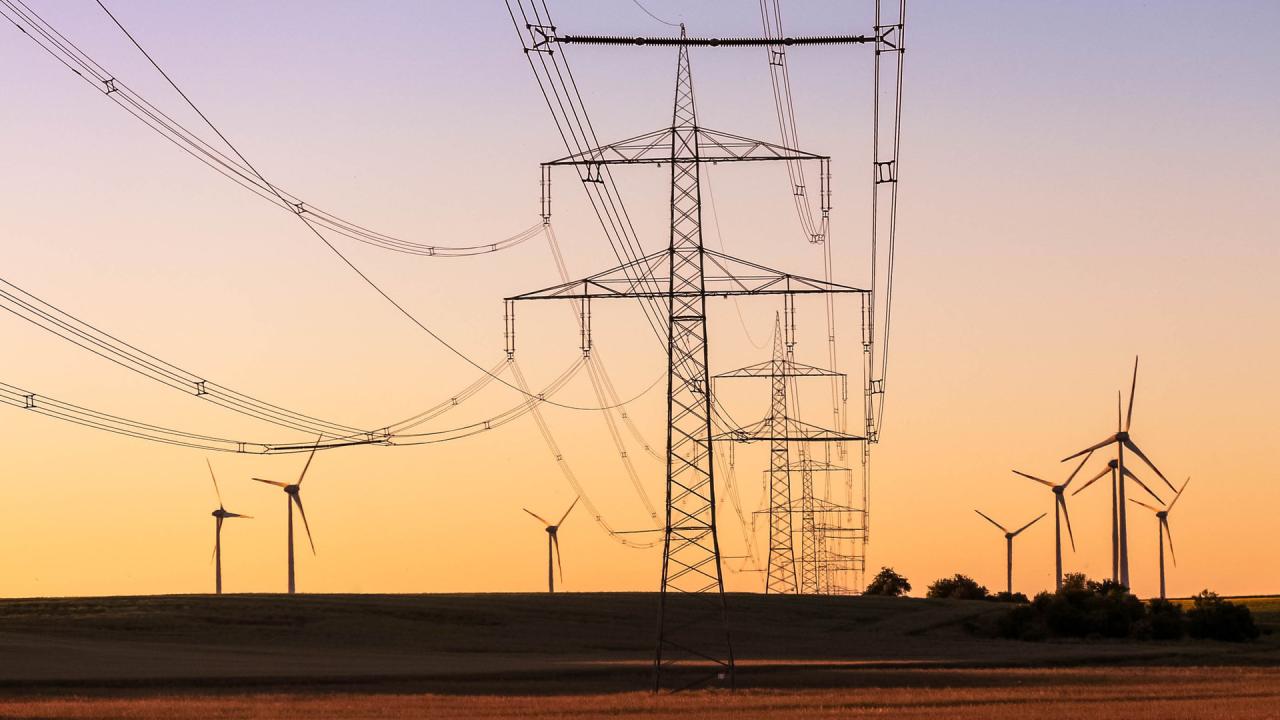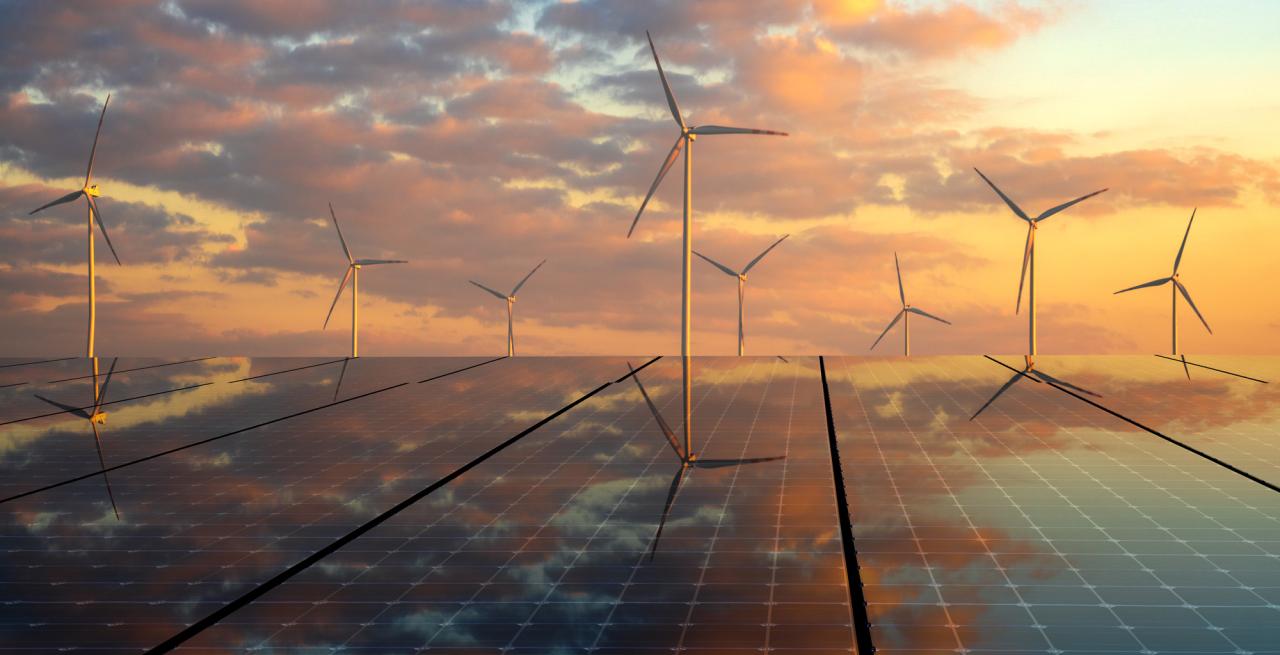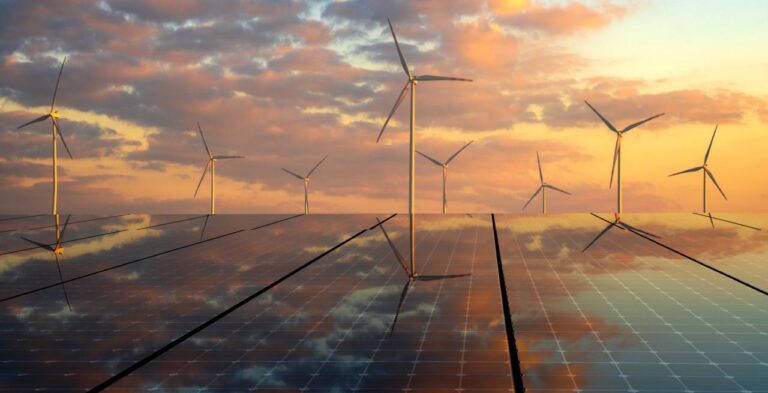The Imperative for Renewable Energy Transition

The shift towards renewable energy is driven by a confluence of environmental, economic, and geopolitical factors. Understanding these underlying drivers highlights the non-negotiable need for this global transition.
A. Climate Change Mitigation: The burning of fossil fuels (coal, oil, natural gas) releases vast amounts of greenhouse gases (GHGs) like carbon dioxide (CO2) into the atmosphere, which trap heat and lead to global warming. This causes extreme weather events, sea-level rise, and biodiversity loss. Renewable energy sources produce little to no GHG emissions during operation, making them crucial for decarbonizing our energy systems and meeting international climate targets.
B. Finite Nature of Fossil Fuels: Fossil fuels are finite resources. Their extraction is becoming more challenging, expensive, and environmentally destructive. Relying on dwindling supplies creates price volatility and geopolitical instability. Renewable energy, derived from naturally replenishing sources like sunlight and wind, offers an inexhaustible and sustainable alternative.
C. Energy Security and Independence: Countries heavily reliant on imported fossil fuels are vulnerable to supply chain disruptions, price shocks, and geopolitical pressures. Developing domestic renewable energy sources enhances national energy security, fosters independence, and creates more stable energy markets.
D. Economic Benefits and Job Creation: The renewable energy sector is a major driver of economic growth and job creation. Investments in renewable infrastructure, manufacturing of solar panels and wind turbines, and research and development create millions of jobs across the globe, stimulating local economies and fostering innovation.
E. Decreasing Costs and Increasing Competitiveness: Over the past decade, the cost of generating electricity from solar and wind has plummeted, making them increasingly competitive with, and often cheaper than, new fossil fuel power plants. This economic viability is a major accelerant for their widespread adoption. Technological advancements and economies of scale continue to drive costs down.
Key Renewable Energy Technologies Powering Ahead
The advancements in renewable energy technologies are remarkable, continuously enhancing efficiency, reducing costs, and expanding their applicability across various scales.
1. Solar Power
Solar energy, derived from the sun’s radiation, is one of the most abundant and rapidly expanding renewable energy sources, with innovations continually increasing its efficiency and versatility.
A. Photovoltaic (PV) Technology Advancements:
* Monocrystalline and Polycrystalline Silicon: The most common types of solar cells, continuously improving in efficiency and manufacturing processes.
* Perovskite Solar Cells: An emerging technology showing extremely high efficiency in lab settings, with the potential for lower manufacturing costs, flexibility, and application in various forms, including transparent or colored cells for building integration.
* Thin-Film Solar Cells: Lightweight and flexible, suitable for integration into buildings (Building-Integrated Photovoltaics – BIPV), vehicles, and portable devices. While generally less efficient than silicon, their versatility is a major advantage.
* Tandem Solar Cells: Combining multiple layers of different materials (e.g., silicon and perovskite) to capture a broader spectrum of sunlight, achieving record-breaking efficiencies.
B. Concentrated Solar Power (CSP): Unlike PV, CSP systems use mirrors to concentrate sunlight onto a small area to generate heat, which then drives a turbine to produce electricity.
* Thermal Storage: CSP plants can incorporate molten salt storage systems, allowing them to store heat and generate electricity for hours after the sun sets, providing dispatchable solar power and overcoming intermittency challenges.
* Hybrid Systems: Combining CSP with other energy sources or thermal applications for increased efficiency and reliability.
C. Floating Solar Farms (Floatovoltaics): Deploying solar panels on bodies of water (lakes, reservoirs, offshore) offers several advantages:
* Land Use Efficiency: Saves valuable land space, especially in densely populated areas.
* Increased Efficiency: Water cools the panels, leading to higher efficiency than land-based installations.
* Reduced Evaporation: The panels can reduce water evaporation from reservoirs, which is crucial in arid regions.
D. Solar Energy Storage Solutions: The intermittency of solar power necessitates efficient energy storage.
* Lithium-Ion Batteries: Currently the dominant technology for both grid-scale and residential solar storage, continuously improving in energy density and cost-effectiveness.
* Next-Gen Batteries: Research into solid-state batteries, flow batteries, sodium-ion batteries, and other chemistries promises even greater capacity, faster charging, longer lifespans, and enhanced safety.
E. Solar Thermal for Heating and Cooling: Using solar energy directly for water heating (solar water heaters) or space heating/cooling in buildings, reducing electricity or fossil fuel consumption. This is a highly efficient way to utilize solar energy for thermal loads.
2. Wind Power
Wind energy, generated by wind turbines, is another rapidly growing renewable source, with significant advancements in turbine design and deployment strategies.
A. Onshore Wind Energy: Land-based wind farms continue to expand, with larger and more efficient turbines capturing more energy from the wind. Advances in blade design, materials science, and control systems enhance performance and reduce noise.
B. Offshore Wind Energy: This is a major growth area, as offshore winds are stronger and more consistent than onshore.
* Fixed-Bottom Turbines: Installed in shallower waters, increasingly powerful and larger in scale.
* Floating Offshore Wind Turbines: A game-changer for deeper waters, allowing turbines to be deployed far from shore where wind resources are optimal. This technology is rapidly maturing and offers immense potential for coastal regions with deep continental shelves.
C. Turbine Technology Innovations:
* Larger Blades and Higher Hub Heights: Increase swept area and access stronger winds, leading to higher capacity factors.
* Direct-Drive Generators: Reduce mechanical complexity and maintenance requirements compared to geared systems.
* Smart Turbines: Equipped with sensors and AI-powered controls that dynamically adjust blade pitch and yaw to optimize energy capture in varying wind conditions, and even communicate with other turbines in the wind farm for collective optimization.
D. Vertical-Axis Wind Turbines (VAWTs): While less common than horizontal-axis turbines, VAWTs are being explored for urban environments or specific niche applications due to their smaller footprint, lower noise, and ability to capture wind from any direction.
E. Wind Energy Storage and Grid Integration: Similar to solar, effective energy storage solutions and advanced grid management systems are crucial for integrating large-scale wind power into the national grid, ensuring stability and reliability.
3. Hydropower
Hydropower, generated from flowing water, is a mature renewable technology that continues to evolve, especially in terms of small-scale and pumped-hydro storage.
A. Conventional Hydropower: Large-scale dams with reservoirs provide reliable, dispatchable power and contribute to flood control and water management. While new large-scale projects are limited due to environmental and social impacts, existing facilities are being upgraded for efficiency.
B. Run-of-River Hydroelectric Systems: These systems generate electricity from the natural flow of a river without creating large reservoirs, minimizing environmental impact. They are often smaller scale and more suitable for diverse geographical locations.
C. Pumped-Hydro Storage (PHS): This is currently the largest form of grid-scale energy storage. Water is pumped uphill to a reservoir during periods of excess electricity (e.g., from solar or wind) and released downhill through turbines during periods of high demand. New projects and optimizations of existing ones are vital for grid stability.
D. Marine Hydrokinetic (MHK) Energy: Harnessing energy from ocean tides and waves. While still in early stages of commercialization, breakthroughs in turbine design and materials are making these technologies more viable, offering a predictable source of renewable energy, particularly for coastal communities.
4. Geothermal Energy
Geothermal energy taps into the heat from within the Earth, offering a constant, baseload source of renewable power.
A. Conventional Geothermal Power Plants: Utilize hot water or steam from geothermal reservoirs deep underground to drive turbines and generate electricity. New drilling techniques are expanding access to these resources.
B. Enhanced Geothermal Systems (EGS): Technologies that create or enhance geothermal reservoirs in areas where they don’t naturally exist, by injecting water into hot dry rock. This significantly expands the potential geographical reach of geothermal power.
C. Direct Use and Geothermal Heat Pumps: Geothermal energy can also be used directly for heating buildings, greenhouses, and industrial processes. Geothermal heat pumps utilize the stable underground temperature to provide efficient heating and cooling for homes and commercial buildings, significantly reducing energy consumption.
D. Co-production with Oil and Gas Wells: Exploring methods to extract geothermal heat from existing or abandoned oil and gas wells, providing an additional revenue stream and cleaner energy from existing infrastructure.
5. Bioenergy
Bioenergy is derived from organic materials (biomass) like agricultural waste, forest residues, and energy crops.
A. Sustainable Biomass Production: Focus on using waste products or dedicated energy crops that do not compete with food production and are harvested sustainably to ensure a net environmental benefit.
B. Biofuels: Producing liquid or gaseous fuels (e.g., ethanol, biodiesel, biogas) from biomass for transportation, heating, or electricity generation. Advanced biofuels focus on non-food feedstocks like algae or agricultural residues.
C. Biopower: Burning biomass directly or gasifying it to produce electricity and/or heat. Modern biopower plants incorporate advanced combustion technologies and emissions controls to minimize environmental impact.
D. Anaerobic Digestion: Breaking down organic waste (e.g., municipal solid waste, agricultural waste, sewage) in the absence of oxygen to produce biogas (rich in methane), which can be used for electricity, heat, or vehicle fuel. This also addresses waste management challenges.
E. Algae Biofuels: Research into cultivating algae for high-yield oil production, which can be converted into biofuels, as algae can grow rapidly and in non-arable land, offering a promising future feedstock.
Key Enablers and Drivers of Renewable Energy Growth

Beyond the specific technologies, several overarching factors are accelerating the global shift towards renewable energy.
A. Energy Storage Solutions (Batteries and Beyond): The intermittency of solar and wind necessitates advanced energy storage. Lithium-ion batteries dominate, but innovations in solid-state batteries, flow batteries, and green hydrogen storage are crucial for grid stability and reliability, enabling higher penetration of renewables.
B. Smart Grids and Grid Modernization: Intelligent electricity grids that use digital communication and IT to monitor, control, and optimize energy flow. Smart grids can integrate distributed renewable energy sources, manage demand response, and improve grid resilience and efficiency, crucial for accommodating a high percentage of variable renewables.
C. Policy Support and Regulatory Frameworks: Government incentives (tax credits, subsidies), renewable energy mandates (Renewable Portfolio Standards), carbon pricing mechanisms, and supportive regulatory environments are vital for de-risking investments and accelerating renewable energy deployment.
D. Corporate Renewable Energy Procurement: A growing number of corporations are committing to 100% renewable energy targets, driving significant investment in new renewable projects through power purchase agreements (PPAs), creating a robust demand signal for the market.
E. International Collaboration and Investment: Global initiatives, climate agreements (like the Paris Agreement), and international development banks are facilitating cross-border investment and technology transfer to accelerate renewable energy adoption, especially in developing countries.
Economic and Societal Impact of Renewable Energy
The transition to renewable energy is not just an environmental imperative; it’s a powerful engine for economic growth, job creation, and social progress.
A. Job Creation: The renewable energy sector is a major global employer. Jobs are created across the entire value chain, including manufacturing (solar panels, wind turbines), installation, operation, maintenance, research and development, and related services. These are often high-skilled, local jobs.
B. Economic Growth and Investment: Significant investments are flowing into the renewable energy sector, driving economic growth, stimulating innovation, and creating new market opportunities for businesses of all sizes, from large utilities to small installers.
C. Reduced Energy Costs: As the cost of renewables continues to fall, they offer a more stable and often cheaper source of electricity compared to volatile fossil fuel prices. This benefits consumers, businesses, and national economies.
D. Enhanced Energy Security and Independence: Countries reduce their reliance on imported fossil fuels, shielding their economies from geopolitical instability and price shocks, leading to greater national security.
E. Improved Public Health and Environmental Quality: Reduced air and water pollution from fossil fuel combustion leads to fewer respiratory illnesses, lower healthcare costs, and overall healthier communities. The preservation of ecosystems and biodiversity also contributes to societal well-being.
Challenges and the Road Ahead for Renewable Energy
Despite the incredible progress, the journey to a fully renewable energy system faces significant challenges that require concerted effort and innovative solutions.
1. Intermittency and Grid Stability:
The variable nature of solar and wind power remains a key challenge for grid integration.
A. Energy Storage: While improving, cost-effective, large-scale, long-duration energy storage solutions are still needed to smooth out fluctuations from intermittent renewables and ensure a reliable baseload power supply.
B. Grid Modernization: Existing grid infrastructure was designed for centralized fossil fuel power plants. It needs substantial upgrades, including smart grid technologies, advanced controls, and transmission line expansion, to handle a high penetration of distributed and variable renewable sources.
C. Forecasting Accuracy: Improving the accuracy of weather forecasting and renewable energy output prediction is crucial for better grid management and balancing supply and demand.
2. Land Use and Environmental Impacts:
While generally cleaner, renewables are not without their own environmental footprint.
A. Land Requirements: Large-scale solar and wind farms require significant land area, which can lead to conflicts over land use, habitat fragmentation, and visual impact.
B. Material Sourcing and Recycling: The production of renewable energy technologies (e.g., solar panels, wind turbine blades, batteries) requires specific materials, some of which are rare. Ensuring ethical sourcing and developing robust recycling processes for end-of-life components are critical challenges.
C. Biodiversity Impact: Wind turbines can pose a risk to birds and bats, and large-scale hydro projects can impact aquatic ecosystems and local communities. Careful siting and mitigation measures are essential.
3. Transmission and Infrastructure:
Getting renewable energy from where it’s generated to where it’s consumed can be a bottleneck.
A. Transmission Line Development: Many prime renewable energy resources (e.g., windy plains, sunny deserts) are located far from major demand centers, necessitating vast new transmission line infrastructure, which faces permitting, financing, and public acceptance challenges.
B. Aging Grid Infrastructure: Much of the existing electricity grid infrastructure in many countries is old and not designed for the bidirectional flow of power from distributed renewable sources, requiring significant investment in upgrades.
4. Cost and Financing:
While costs are falling, the sheer scale of the energy transition requires massive investment.
A. Capital Investment: The upfront capital cost for building new renewable energy projects and upgrading grid infrastructure is substantial, requiring innovative financing mechanisms and continued policy support.
B. Policy Uncertainty: Inconsistent or shifting government policies and incentives can create investment uncertainty, slowing down the pace of deployment.
C. Grid Connection Costs: The costs associated with connecting new renewable energy projects to the grid can sometimes be a barrier, particularly for smaller projects.
5. Public Acceptance and Social Equity:
Ensuring a just and equitable transition for all communities.
A. Not-in-My-Backyard (NIMBY) Syndrome: Local opposition to new renewable energy projects (e.g., wind farms, transmission lines) due to visual impact, noise, or perceived property value impacts can delay or halt development.
B. Just Transition for Fossil Fuel Workers: Ensuring that workers in the fossil fuel industry are provided with retraining, new job opportunities, and support during the transition to a renewable energy economy is crucial for social equity.
C. Access to Clean Energy: Ensuring that affordable, reliable clean energy reaches all communities, including remote or underserved populations, to avoid exacerbating energy poverty.
Conclusion
The global energy transition, powered by the relentless advance of renewable energy technologies, is irreversible and accelerating. What began as an environmental necessity has evolved into an undeniable economic opportunity, creating new industries, millions of jobs, and fostering greater energy security worldwide. From the plummeting costs and increasing efficiencies of solar and wind power to the burgeoning potential of advanced energy storage and green hydrogen, the era of clean energy is not just arriving; it’s already here, powering our present and shaping our future.
While significant challenges remain—particularly in grid modernization, large-scale storage, and ensuring an equitable transition for all communities—the trajectory is clear. Continuous innovation, supportive policy frameworks, and unprecedented levels of global investment are driving us towards a future where renewable energy is the dominant, reliable, and affordable source of power for all. By embracing these advancements and working collaboratively, we can overcome the hurdles and fully realize the promise of a truly sustainable, resilient, and prosperous energy future for generations to come. The era of clean energy is not just powering ahead; it’s redefining the very foundation of our civilization.




